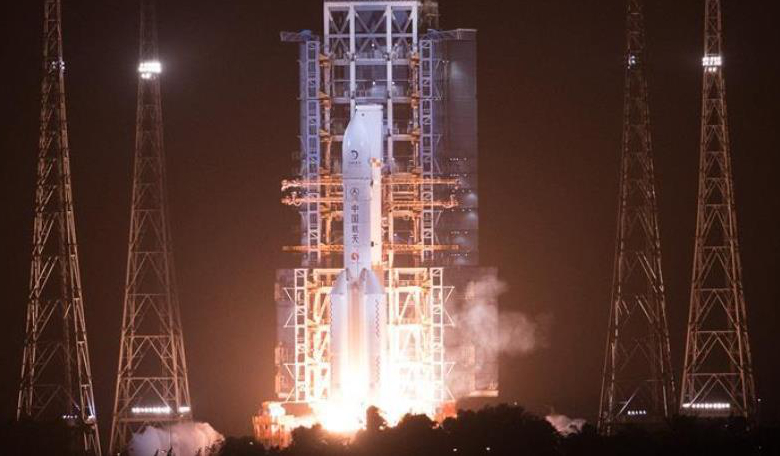At 4:30 on November 24th, China used the Long March 5 carrier rocket to successfully launch the lunar exploration Chang’e-5 probe at the Wenchang Space Launch Site in China.
After the rocket flew for about 2,200 seconds, the probe was successfully sent into the scheduled trajectory, starting China’s first return journey from sampling of extraterrestrial objects.
After the Long March 5 carrier rocket was launched into space, it carried out four separations, including booster separation, fairing separation, primary and secondary separation, and rocket separation.
Once at the Moon, the Chang’e-5 mission plans to achieve three major engineering goals:
- First, to break through key technologies such as narrow window multi-orbit binding launch, automatic lunar surface sampling and packaging, lunar surface takeoff, lunar orbital rendezvous and docking, and lunar sample storage, and improve China’s aerospace technology level;
- the second is to realize China’s first automatic sampling and return of extraterrestrial celestial bodies, and to promote major progress in science and technology in China;
- the third is to improve the lunar exploration engineering system to accumulate important talents, technology and material foundations for China’s future manned lunar landing and deep space exploration.
The scientific objectives of the Chang’e-5 mission are mainly to carry out the survey of the topography of the landing site area and the survey of the geological background, obtain on-site analysis data related to lunar samples, and establish the connection between on-site exploration data and laboratory analysis data; systemize lunar samples.
Long-term laboratory research to analyze the structure, physical properties, and material composition of the lunar soil, and deepen the research on the origin and evolution of the moon.
The Chang’e-5 mission is organized and implemented by the National Space Administration, and is specifically composed of five major systems including the overall project and detectors, launch vehicles, launch sites, measurement and control and recovery, and ground applications.
The National Space Administration’s Lunar Exploration and Aerospace Engineering Center is the overall engineering unit. The China Academy of Launch Vehicle Technology affiliated to China Aerospace Science and Technology Corporation is responsible for the development of carrier rocket systems, and the China Academy of Space Technology is responsible for the development of detector systems.
The Ministry of Satellite Launch, Measurement and Control System of China is responsible for organizing launch, measurement and control and recovery.
The National Astronomical Observatory of the Chinese Academy of Sciences is responsible for the research and development of ground application systems and is responsible for the reception, processing, and storage management of scientific data and samples.
The China Lunar Exploration Project is a major national science and technology special landmark project defined in the “National Medium and Long-term Science and Technology Development Plan (2006-2020)”. A major strategic decision made by scientific and technological progress and innovation, and improvement of comprehensive national strength.
Since the project was established and officially launched in January 2004, it has successively successfully implemented Chang’e 1, Chang’e 2, Chang’e 3, reentry flight test and Chang’e 4.
This launch was the 353rd launch of the Long March series of carrier rockets.











